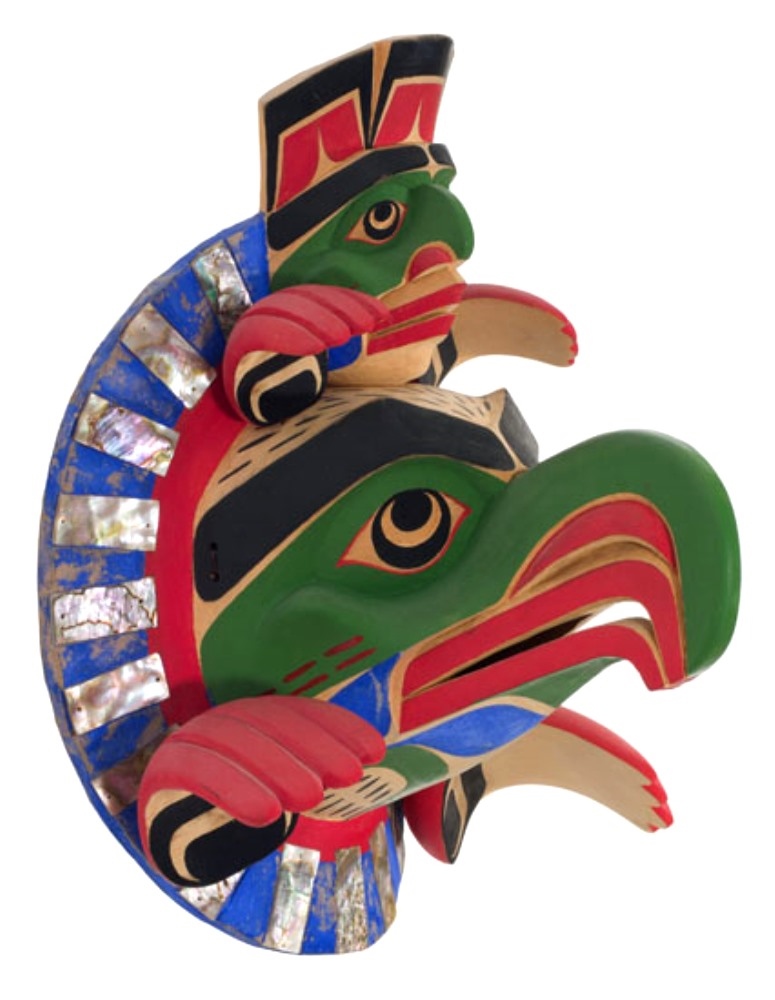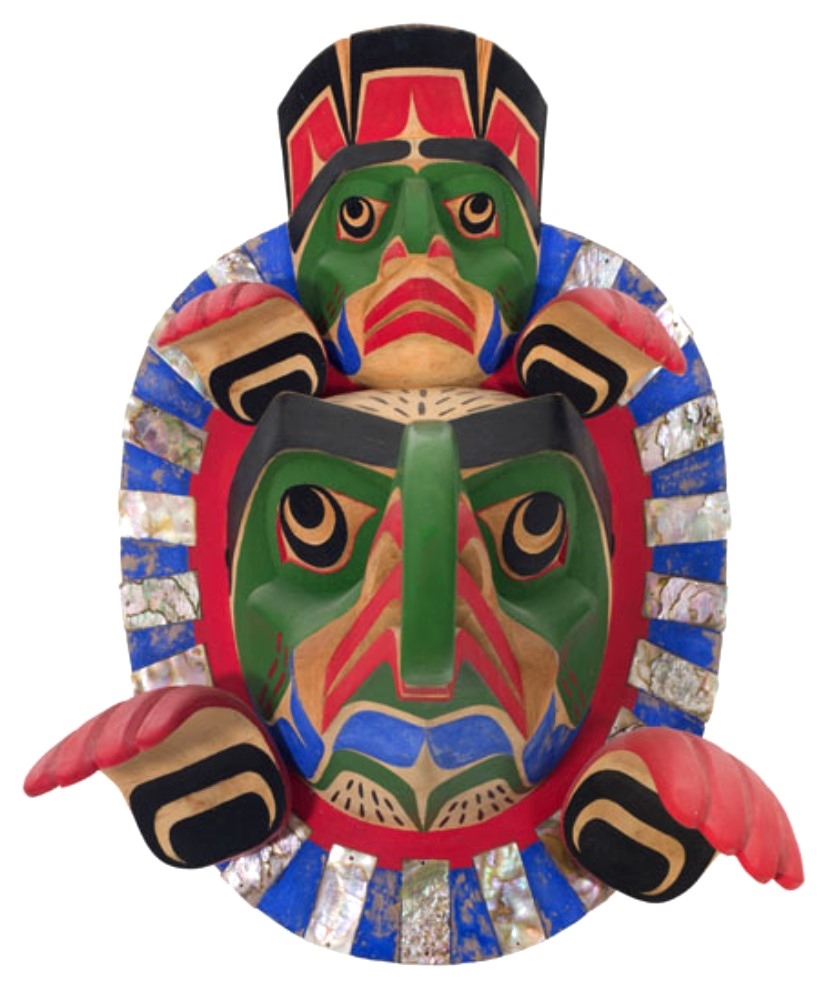Bella Coola Style frontlet headdresses made by Beau Dick – Cedar dance mask, 1980
A Bella Coola Style frontlet headdresses or dance mask – Central coast of British Columbia – Canada
This cedar mask is made by the artist Beau Dick in 1980 and a homage to the the Bella Coola, or Nuxalk (nu-hawk).
Carved yellow cedar mask with abalone inlay and paint verso is signed and dated 1980.
Dimensions: 26.7 x 16.5 x 16.5 cm – 10.5 x 6.5 x 6.5 in.
For price, shipping and other details contact gallery
See more tribal artworks and objects>>
The homeland and present-day territory of the Bella Coola people is the Bella Coola Valley, on the central coast of British Columbia, Canada
Originally this object wasn’t made to be displayed indoors. Rather it was meant to sway and bob atop the head of a dancer as a story was reenacted in firelit ceremony.
During the nineteenth century, frontlet headdresses became the principal style of ceremonial headdress throughout the Northwest Coast. They were worn by high-ranking individuals who shook bird down out of the crown of the headdress as they danced, causing it to drift and swirl around both dancer and audience. These headdresses usually incorporate a carved wooden plaque that represents a crest animal or mythical being; Bella Coola examples are often deeply carved to represent birds. Inlaid pieces of abalone shell framing the plaque are meant to sparkle dramatically as the wearer of the headdress moves.
Beau DICK (1956 – 2017)
Born in Alert Bay in 1955 though raised in Kingcome, BC, Dick learned traditional woodcarving under the tutelage of Kwakwaka’wakw legends Tony Hunt and Doug Cranmer. Building on this foundation, Dick mastered the form and expanded on it. The wild creativity and versatility of his mask carvings have brought him widespread acclaim, and are collected by institutions worldwide. His masks frequently depict supernatural beings from local indigenous myths, often incorporating found materials which symbolize personal or communal significance. He would sometimes merge these with contemporary western concepts or insignia as a form of critique, challenging the legacy of colonialism by showing how the culture and language of his people has been suppressed and transformed.
Date:
January 23, 2020
See more artworks and bio of
ARTS Tribal
